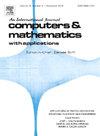Physics-informed neural network for option pricing weather derivatives model
IF 2.5
2区 数学
Q1 MATHEMATICS, APPLIED
引用次数: 0
Abstract
Weather derivatives are financial tools that use a weather index as the underlying asset to provide protection against non-catastrophic weather events. In this article, we propose a physics-informed neural network (PINN) approach for pricing weather derivatives associated with two standard processes: the Ornstein-Uhlenbeck process and the Ornstein-Uhlenbeck process with jump-diffusions. PINNs are a scientific machine learning method specifically designed to address problems related to partial differential equations (PDEs).
To apply the PINN technique for jump-diffusion, we convert the partial integro-differential equation into a PDE using integral discretization. We randomly select training data points within the domain and utilize the transformed PDE along with the initial and boundary conditions to construct the loss function. For the neurons in the hidden layer, we employ the hyperbolic tangent function (tanh) as the activation function. The weights of the network connection are optimized using the L-BFGS algorithm.
We will conduct numerical experiments to evaluate the efficiency of the proposed technique. Additionally, we compare our method with conventional numerical approaches to show that our technique serves as an effective alternative to existing pricing methods for weather derivatives. Finally, we will examine a real-world case study where the model's parameters are determined using precipitation data.
天气衍生品期权定价模型的物理信息神经网络
天气衍生工具是一种金融工具,它使用天气指数作为基础资产,为非灾难性天气事件提供保护。在本文中,我们提出了一种物理信息神经网络(PINN)方法来定价与两个标准过程相关的天气衍生品:Ornstein-Uhlenbeck过程和带有跳跃扩散的Ornstein-Uhlenbeck过程。pinn是一种科学的机器学习方法,专门用于解决与偏微分方程(PDEs)相关的问题。
本文章由计算机程序翻译,如有差异,请以英文原文为准。
求助全文
约1分钟内获得全文
求助全文
来源期刊

Computers & Mathematics with Applications
工程技术-计算机:跨学科应用
CiteScore
5.10
自引率
10.30%
发文量
396
审稿时长
9.9 weeks
期刊介绍:
Computers & Mathematics with Applications provides a medium of exchange for those engaged in fields contributing to building successful simulations for science and engineering using Partial Differential Equations (PDEs).
 求助内容:
求助内容: 应助结果提醒方式:
应助结果提醒方式:


